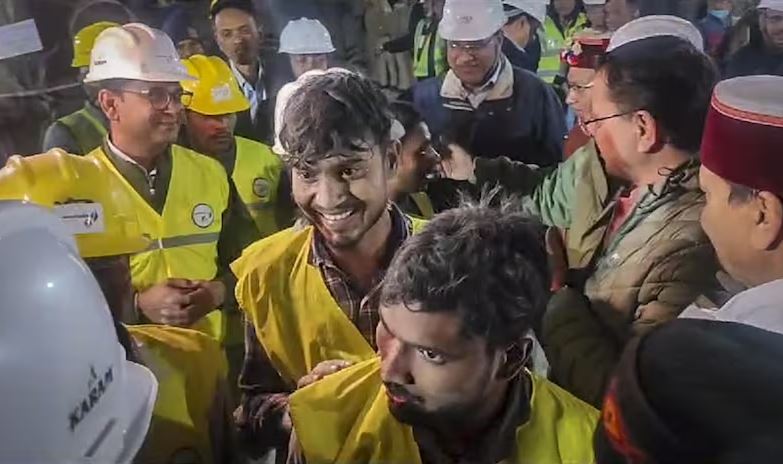London: As rescuers in India Tuesday successfully pulled out all 41 construction workers trapped in a collapsed mountain tunnel in Uttarakhand after 17 days, the global media hailed the rescue operation and provided live coverage of the dramatic development.
“Outside the tunnel, there have been celebrations at the news of the first man coming out of the tunnel,” the BBC reported while providing regular updates on the rescue operation.
It uploaded on its website a photograph that showed Uttarakhand Chief Minister Pushkar Dhami and Union Minister VK Singh meeting the first worker rescued from the tunnel.
“Video footage from the scene showed Pushkar Singh Dhami, chief minister of Uttarakhand state meeting the workers, who appeared to be in good health, as they were removed from the tunnel amid jubilant scenes,” CNN reported.
The first workers were removed following a series of agonizing setbacks, during which rescue efforts were halted when the heavy machinery used to drill through the debris broke down, forcing workers to partially dig by hand and adopt other riskier methods to bring them to safety, it said.
The evacuation of the men to safety began more than six hours after rescuers broke through to end an ordeal that began November 12 when the tunnel caved in, Qatar-based news channel Al-Jazeera reported.
It said the ambulances with their lights flashing lined up at the mouth of the tunnel to transport the workers to a hospital about 30km away.
“The labourers are being pulled out through a passageway made of welded pipes that rescuers had previously pushed through dirt and rocks,” it said.
British daily ‘The Guardian’ reported that the dramatic scenes of the first men emerging on stretchers from the entrance of the Silkyara-Barkot tunnel came after over 400 hours, during which the major rescue operation hit multiple obstacles, delays and false promises of imminent rescue.
“Human labour triumphed over machinery as the specialists managed to manually drill through the final 12 metres of rubble to reach the men. An ‘escape passage’ pipe was inserted, enabling the rescuers – carrying wheeled stretchers and oxygen cylinders – to enter and finally reach those inside,” the paper said in its detailed report.
Military engineers and miners drill ‘rat hole’ through debris to complete a painstaking extraction mission, said London-based daily ‘The Telegraph’ in its lead story.
A portion of the tunnel collapsed November 12, blocking the exit for the workers who were inside.
Food, medicines and other essentials were sent to them through a six-inch pipe pushed through the rubble of the collapsed portion.
PTI
